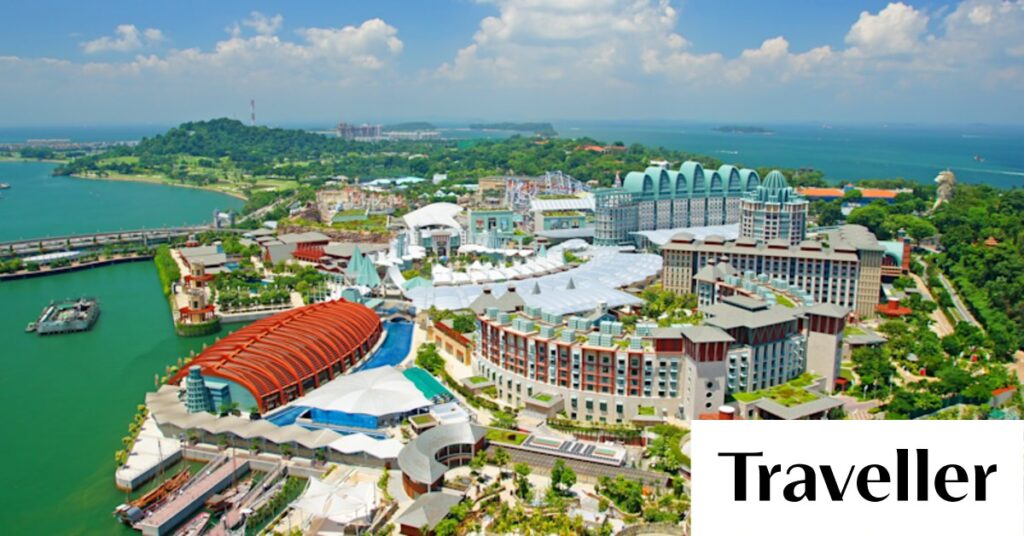
As Singapore celebrates its 60th anniversary of independence, the city-state stands as a testament to transformation and resilience. From its humble beginnings to its current status as a global financial and cultural hub, Singapore offers myriad reasons to visit and explore. This article delves into the vibrant tapestry of experiences that make Singapore a unique destination.
Singapore’s Culinary Delights
Singapore is a culinary paradise, offering a diverse range of dining experiences. While affordable hawker centers are a staple, the city also boasts a high-end dining scene with three restaurants holding the coveted three Michelin stars: Odette, Zen, and Les Amis. The culinary landscape is further enriched by casual eateries serving everything from noodle dishes to thali plates.
Until 1971, street-food culture thrived with hawkers selling from portable kitchens. The government then established permanent food centers, now cherished cultural landmarks. Visitors can sample local cuisine at Old Airport Road, Tiong Bahru, Maxwell, and Tekka, enjoying dishes like the famous black pepper crab.
International Flavors
Singapore’s food scene is a melting pot of global influences. Australian chefs like Dave Pynt at Burnt Ends and Tetsuya Wakuda at Waku Ghin add to the culinary diversity. The city also features a vibrant bar scene, with venues like Atlas and Jigger & Pony making the World’s 50 Best Bars list.
Green Spaces and Urban Design
Despite its urban landscape, Singapore is rich in green spaces. The Singapore Botanic Gardens, a UNESCO World Heritage site, spans 82 hectares and features over 10,000 plant species. Gardens by the Bay, with its Flower Dome and Cloud Forest, offers a blend of nature and modern architecture.
Pulau Ubin provides a tranquil escape from city life, while the Rail Corridor connects major green spaces, inviting walkers, runners, and cyclists. The Singapore River, East Coast Park, and Marina Bay offer scenic spots for relaxation and recreation.
Innovative Urban Planning
Singapore’s commitment to sustainability is evident in its urban planning. The Green Plan aims for net zero emissions by 2050, with initiatives like planting one million trees and reducing landfill waste. The city’s extensive public transport system, including the MRT and bus network, supports this vision.
Cultural Richness and Heritage
Singapore’s cultural diversity is a cornerstone of its identity. The city-state is home to four official languages: Chinese, Malay, Tamil, and English, fostering a multicultural environment. The unique Singlish dialect adds a local flavor to interactions.
Peranakan culture, a blend of Malay and Chinese influences, is celebrated through cuisine and heritage sites. The city’s vibrant festival calendar reflects its multicultural ethos, with events like the Singapore Grand Prix drawing international attention.
Architectural Marvels
Singapore’s architecture is a blend of old-world charm and contemporary design. Iconic structures like Marina Bay Sands and the Jewel at Changi Airport showcase innovative design. Historic shophouses and members’ clubs offer glimpses into the city’s past.
Family-Friendly Attractions
Singapore is a haven for families, offering attractions like the Singapore Cable Car and Sentosa Island’s theme parks. The National Museum of Singapore and wildlife reserves provide educational and recreational opportunities. Free activities abound, from tai chi in the Botanic Gardens to exploring Chinatown and Little India.
As Singapore marks its 60th year, it continues to evolve, offering visitors a dynamic blend of tradition and modernity. Whether through its culinary delights, green spaces, cultural richness, or architectural wonders, Singapore remains a destination worth exploring and celebrating.





